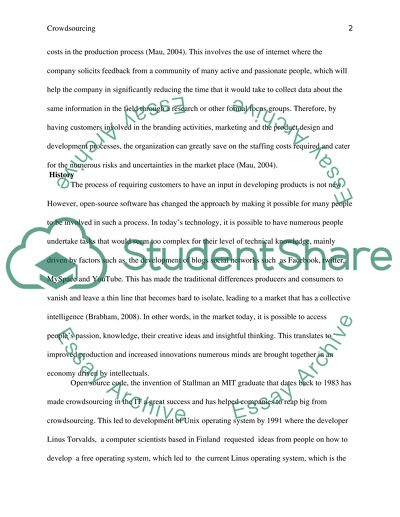Cite this document
(“Crowdscourcing Term Paper Example | Topics and Well Written Essays - 3750 words”, n.d.)
Crowdscourcing Term Paper Example | Topics and Well Written Essays - 3750 words. Retrieved from https://studentshare.org/information-technology/1485433-crowdscourcing
Crowdscourcing Term Paper Example | Topics and Well Written Essays - 3750 words. Retrieved from https://studentshare.org/information-technology/1485433-crowdscourcing
(Crowdscourcing Term Paper Example | Topics and Well Written Essays - 3750 Words)
Crowdscourcing Term Paper Example | Topics and Well Written Essays - 3750 Words. https://studentshare.org/information-technology/1485433-crowdscourcing.
Crowdscourcing Term Paper Example | Topics and Well Written Essays - 3750 Words. https://studentshare.org/information-technology/1485433-crowdscourcing.
“Crowdscourcing Term Paper Example | Topics and Well Written Essays - 3750 Words”, n.d. https://studentshare.org/information-technology/1485433-crowdscourcing.


